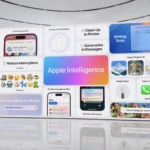

Unlocking the Potential of Extended Reality (XR) for Training
Introduction to Extended Reality (XR)
Extended Reality (XR) is an umbrella term that encompasses Virtual Reality (VR), Augmented Reality (AR), and Mixed Reality (MR). These immersive technologies offer unique ways to blend digital content with the physical world, creating experiences that range from entirely virtual environments to real-world enhancements through digital overlays.
Virtual Reality (VR) fully immerses users in a digital environment, cutting off the physical world and allowing them to interact within a computer-generated space. Users typically wear VR headsets that provide a 360-degree view of the digital realm, making it particularly effective for applications that require complete focus or full immersion, such as simulators for pilot training or virtual walkthroughs of architectural designs.
Augmented Reality (AR), in contrast, overlays digital information on the physical world without fully immersing the user in a virtual setting. Through devices like smartphones or AR glasses, users can see and interact with digital content that appears as an extension of the real world. This technology is frequently used in applications such as navigation systems, repair instructions overlaying machinery, or interactive learning modules in educational settings.
Mixed Reality (MR) goes a step further by merging both real and virtual environments, allowing for interaction between physical and digital objects in real time. This technology requires more sophisticated hardware, such as advanced headsets like Microsoft’s HoloLens, and is immensely beneficial in fields requiring complex simulations and interactions, such as medical surgery training or collaborative engineering tasks.
The growing significance of Extended Reality technologies extends across various industries, from entertainment and retail to education and corporate training. The ability to create engaging, immersive experiences translates into improved learning outcomes and more effective skill acquisition. As XR technologies continue to evolve, their application in training and development is set to expand, offering new possibilities for experiential learning and competency building.
The Role of Virtual Reality (VR) in Training
Virtual Reality (VR) plays a pivotal role in modern training methodologies by creating fully immersive environments that closely replicate real-world scenarios. This technology allows trainees to engage with realistic simulations, thus providing experiential learning opportunities within a controlled and risk-free setting. One of the primary benefits of VR in training is its ability to render intricate and dynamic environments, which traditional training methods often cannot replicate. Consequently, this makes VR an invaluable tool across various industries.
In the healthcare sector
VR is revolutionizing how surgical training is conducted. Advanced VR simulations enable medical trainees to practice complex surgical procedures without the need for cadavers or live patients. This approach not only enhances the proficiency of future surgeons but also reduces the risk of malpractice, thereby ensuring patient safety. Similarly, in the aviation industry, VR-based flight simulators offer pilots a comprehensive training experience, allowing them to handle a wide array of emergency scenarios and weather conditions. This, in turn, leads to better preparedness and heightened safety in real-world operations.
The manufacturing industry also leverages VR technology to train personnel in the operation and maintenance of sophisticated equipment. VR simulations provide a hands-on experience that traditional manuals or videos cannot match, enabling trainees to familiarize themselves with machinery intricacies before interacting with the actual equipment. This reduces the likelihood of operational errors and accidents, thereby promoting workplace safety.
Another significant advantage of VR training is its repeatability and ease of providing instant feedback. Trainees can practice specific tasks multiple times, honing their skills through repeated exposure to various scenarios. Instant feedback mechanisms embedded within VR systems allow for prompt correction of mistakes and encouragement of best practices, thereby accelerating the learning curve.
In summary, the role of VR in training is indispensable, offering immersive, repeatable, and risk-free learning environments that enhance skill acquisition and improve operational safety across multiple industries. By harnessing the power of VR, organizations can ensure their workforce is both competent and prepared for real-world challenges.
Augmented Reality (AR) in Enhancing Training Experiences
Augmented Reality (AR) is a transformative technology that overlays digital information onto the real world, seamlessly blending the virtual with the physical environment. By integrating compelling visual elements with real-world scenarios, AR enhances a user’s perception and interaction with their surroundings. This ability to superimpose digital content onto physical objects has substantial implications for training across various sectors.
One of the primary advantages of AR in training is the provision of real-time guidance and interactive instructions. This dynamic form of learning offers an immersive experience, where trainees can engage with 3D models, animations, and real-time data while performing tasks. For instance, in the maintenance and repair industry, AR can project step-by-step guidelines directly onto machinery or equipment, allowing technicians to follow along with visual cues and improve their efficiency and accuracy. Similarly, in education, AR can convert abstract concepts into tangible experiences, significantly enhancing comprehension and retention.
Various industries are already leveraging AR to visualize complex procedures, thereby enhancing understanding and skill acquisition. In the healthcare sector, AR-assisted surgeries allow surgeons to view critical diagnostic imaging overlays directly on patients, enabling more precise and informed surgical interventions. AR glasses, employed in on-the-job training, empower employees with instant access to critical information, thereby facilitating quicker learning curves and reducing error margins. For example, an automotive technician wearing AR glasses can receive real-time visual instructions and virtual markers to identify components and perform intricate repairs with confidence.
In essence, the integration of Augmented Reality into training programs fosters an engaging and interactive environment that enriches the learning experience. By providing immediate feedback and hands-on practice in a safe, controlled setting, AR prepares individuals more effectively for real-world challenges, ensuring a higher standard of proficiency and readiness in their respective fields.
Transformative Potential of Mixed Reality (MR) in Training
Mixed Reality (MR) represents a powerful blend of Virtual Reality (VR) and Augmented Reality (AR) technologies that create immersive training environments where digital and physical objects coexist and interact in real time. By combining elements of the virtual world with the tangible one, MR allows for a seamless integration that can revolutionize training methodologies across various sectors.
One of the most striking advantages of MR is its capability to offer realistic and interactive training scenarios.
In sectors like defense, for instance, MR can be used to develop advanced training programs where soldiers encounter both real and simulated threats. This enables trainees to practice and refine their skills in a controlled yet highly realistic environment, significantly improving their readiness and response to real-world situations. By incorporating both digital and physical elements, soldiers can experience a multifaceted training regimen that engages multiple senses and cognitive processes.
In the realm of manufacturing, MR proves invaluable in assisting with intricate assembly processes. Technicians can utilize MR headsets to see digital overlays on physical components, guiding them through each step of an assembly with enhanced precision and efficiency. This minimizes the risk of errors and accelerates the learning curve for new employees. The overlay of digital instructions onto physical parts ensures that complex procedures are followed correctly, reducing downtime and improving overall productivity.
The transformative potential of MR is further demonstrated in collaborative training scenarios. Teams from different locations can interact with both the virtual and real-world components, working together on complex tasks in a shared MR environment. This fosters better communication, enhances problem-solving skills, and allows participants to practice coordination and teamwork in a setting that closely mirrors real-world conditions.
Overall, Mixed Reality stands as a groundbreaking tool poised to redefine training across multiple industries. Its ability to blend real-world interactions with virtual simulations makes it an ideal platform for developing comprehensive, interactive, and practical training programs.
Benefits of XR in Training
Extended Reality (XR) technologies, encompassing Virtual Reality (VR), Augmented Reality (AR), and Mixed Reality (MR), offer transformative benefits for training purposes. One of the primary advantages is the significant improvement in engagement and retention rates. Immersive XR environments captivate learners, making training sessions more interactive and enjoyable. This heightened level of engagement translates into better retention of information, ensuring that learners can apply their knowledge effectively in real-world scenarios.
Moreover, XR in training is notably cost-effective. Traditional training methods often require substantial physical resources, such as equipment, travel, and venue costs. In contrast, XR provides a virtual alternative, eliminating many of these expenses. Organizations can create comprehensive and realistic training programs without the continuous financial outlay for physical materials, making XR an economically sustainable option.
A critical benefit of XR technologies is the ability to conduct training simulations safely and repeatedly. High-risk industries like healthcare, aerospace, and manufacturing can leverage XR to simulate hazardous situations without any real-world risk. Trainees can experience and learn from these simulations multiple times, refining their skills and reactions in a controlled, risk-free environment. This not only enhances their preparedness but also boosts confidence in handling actual crises.
Scalability is another significant merit of XR training solutions. As businesses grow, the need for training expands, and XR can easily scale to accommodate a larger number of trainees. This scalability ensures that organizations can maintain consistent training standards across different locations and various employee levels.
Finally, XR offers the unique ability to customize training programs to individual learning speeds and styles. Learners can receive personalized feedback and directions, catering to their specific needs. This level of customization enhances learning efficacy, ensuring that each gains the maximum benefit from the training process.
Case Studies: XR Training Applications
The integration of Extended Reality (XR) technologies in training programs has shown transformative effects across multiple industries, demonstrating notable improvements in efficiency, safety, and skill proficiency. This section explores detailed examples of how XR training has been successfully employed in healthcare, aviation, and manufacturing.
Healthcare: VR Surgical Simulations
The use of Virtual Reality (VR) for surgical training has been a game-changer in the healthcare sector. A notable case is the implementation of VR surgical simulations at the Stanford University School of Medicine. Surgeons can practice complex procedures in a risk-free, simulated environment, enhancing their skills without endangering patients. Studies have shown that surgeons trained with VR simulations significantly reduce the likelihood of errors during actual surgeries, leading to enhanced patient outcomes. This immersive training method facilitates a faster learning curve and increased confidence, crucial for handling real-life medical situations.
Aviation: AR Maintenance Checks
In aviation, Augmented Reality (AR) has been instrumental in redefining maintenance training. Boeing, a leading aerospace company, utilizes AR to perform maintenance checks, overlaying digital information onto real-world components. Technicians wearing AR headsets receive real-time guidance, procedural checklists, and diagnostic data, enhancing precision and reducing human error. This method ensures that maintenance tasks are completed correctly and efficiently, even by less experienced personnel. The integration of AR in training has led to a decrease in downtime and significantly improved aircraft safety and reliability.
Manufacturing: MR Assembly Tutorials
Mixed Reality (MR) has revolutionized assembly line training in the manufacturing industry. One exemplary case is the adoption of Microsoft HoloLens at Ford Motor Company. This technology provides workers with detailed, step-by-step assembly tutorials and real-time troubleshooting support. Employees can visualize complex assemblies in three dimensions, allowing for more intuitive learning and error reduction. These MR tutorials have resulted in faster onboarding, reduced assembly errors, and a higher level of skill proficiency among workers. Furthermore, it facilitates continuous learning and adaptation to new technologies and processes, ensuring the workforce remains agile and efficient.
These case studies highlight the promising potential of XR technologies in training applications. By fostering an immersive learning environment, VR, AR, and MR contribute significantly to improved performance metrics such as accuracy, speed, and competency across various sectors.
Challenges and Considerations in Adopting XR for Training
The adoption of Extended Reality (XR) technologies for training purposes presents several notable challenges and considerations that organizations must address to harness its full potential effectively. One of the primary concerns is the high initial cost associated with implementing XR. Purchasing specialized hardware and software, in addition to developing or acquiring tailored content, represents a substantial financial investment. Budgets often need meticulous planning to incorporate these expenses without impacting other business operations.
Technical barriers also pose significant hurdles.
The deployment of XR requires a robust technical infrastructure capable of supporting high-performance applications. This includes powerful computers, high-speed internet connections, and cutting-edge XR devices such as VR headsets or augmented reality glasses. Additionally, software compatibility and integration with existing systems can be complex, necessitating elaborate technical assessments to ensure seamless functionality.
Another crucial aspect is the development of appropriate training content. Unlike traditional methods, XR-based training demands immersive and interactive content that is both engaging and pedagogically sound. Crafting such content often requires collaboration between subject matter experts, instructional designers, and XR developers, making it a resource-intensive endeavor.
Resistance to change from traditional training methods further complicates the adoption process. Employees and trainers accustomed to conventional training might exhibit reluctance to embrace new technologies, leading to lower engagement and effectiveness. This resistance can be mitigated through phased implementations and pilot programs. Introducing XR gradually allows personnel to acclimate to the new tools, reducing apprehensive attitudes and promoting a smoother transition.
Integrating continuous feedback loops is another strategic approach to overcoming these challenges. By soliciting regular feedback from users, organizations can identify and address any issues early on, ensuring that the XR training program remains effective and user-friendly. Continuous improvement based on real-time feedback ensures that the training modules evolve in line with the learners’ needs and technological advancements.
Ultimately, the successful integration of XR into training programs relies on thoughtful planning and execution. By addressing the financial, technical, and cultural hurdles with strategic initiatives, organizations can unlock the transformative potential of Extended Reality in their training endeavors.
The Future of XR in Training
The future of Extended Reality (XR) for training is set to revolutionize the way industries approach skill development and workforce education. As technological advancements in XR continue to unfold, various industry sectors are poised to benefit from increasingly sophisticated virtual training environments. One of the most promising developments is the integration of haptic feedback, which offers trainees a more immersive and tactile experience. By simulating the sense of touch, haptic feedback bridges the gap between virtual and physical interactions, making training modules significantly more realistic and effective.
Artificial Intelligence (AI) integration is another key trend that is enhancing the efficacy of XR-based training.
AI algorithms can adapt training programs to suit the learning pace and needs of individual users, offering personalized educational experiences that were previously unattainable. The combination of AI and XR allows for real-time feedback and adjustments, further optimizing the learning curve and thus accelerating skill acquisition.
Moreover, the advent of cloud-based XR solutions is lowering the barriers to entry for many organizations. By leveraging cloud technology, companies can deploy scalable and cost-effective XR training programs without the need for substantial upfront investments in hardware and infrastructure. This capability ensures broader accessibility and enables smaller organizations to benefit from cutting-edge training methodologies.
These innovations are expected to have a profound impact on various industries, including healthcare, manufacturing, and education. For instance, medical professionals can perform complex surgical simulations, factory workers can train on virtual assembly lines, and students can explore interactive learning environments, all facilitated by enhanced XR technology. The continuous improvement in these areas underscores the importance of ongoing research and development.
Industry collaborations play a vital role in pushing the boundaries of XR for training. Partnerships between tech companies, academic institutions, and industry leaders are crucial for fostering innovation and ensuring that XR solutions are practical, effective, and widely adopted. As these collaborations grow, the potential of XR as a transformative training tool will only continue to expand, heralding a new era of enhanced workforce development.
Related Posts
Binance推荐
Thanks for sharing. I read many of your blog posts, cool, your blog is very good. https://accounts.binance.com/fr/register-person?ref=GJY4VW8W
open binance account
Thanks for sharing. I read many of your blog posts, cool, your blog is very good. https://accounts.binance.info/register?ref=P9L9FQKY
註冊binance
Can you be more specific about the content of your article? After reading it, I still have some doubts. Hope you can help me.
binance referral bonus
Thank you for your sharing. I am worried that I lack creative ideas. It is your article that makes me full of hope. Thank you. But, I have a question, can you help me?
registrarse en Binance
Thanks for sharing. I read many of your blog posts, cool, your blog is very good.
бнанс код
I don’t think the title of your article matches the content lol. Just kidding, mainly because I had some doubts after reading the article.
Mag-sign up upang makakuha ng 100 USDT
Thanks for sharing. I read many of your blog posts, cool, your blog is very good.
binance
Your point of view caught my eye and was very interesting. Thanks. I have a question for you.
binance
Can you be more specific about the content of your article? After reading it, I still have some doubts. Hope you can help me.
Зареструватися
I don’t think the title of your article matches the content lol. Just kidding, mainly because I had some doubts after reading the article.
Зареструйтесь, щоб отримати 100 USDT
Can you be more specific about the content of your article? After reading it, I still have some doubts. Hope you can help me.
开设Binance账户
Thank you for your sharing. I am worried that I lack creative ideas. It is your article that makes me full of hope. Thank you. But, I have a question, can you help me?
binance
Thank you for your sharing. I am worried that I lack creative ideas. It is your article that makes me full of hope. Thank you. But, I have a question, can you help me?
binance registrace
Thank you for your sharing. I am worried that I lack creative ideas. It is your article that makes me full of hope. Thank you. But, I have a question, can you help me?
Dizaynersk_hron
Как сделать интерьер утонченным с помощью дизайнерских элементов.
Мебель премиум-класса [url=https://byfurniture.by/]Мебель премиум-класса[/url] .
最佳Binance推荐代码
I don’t think the title of your article matches the content lol. Just kidding, mainly because I had some doubts after reading the article.
Ustvarite osebni racun
Can you be more specific about the content of your article? After reading it, I still have some doubts. Hope you can help me.










22 comments